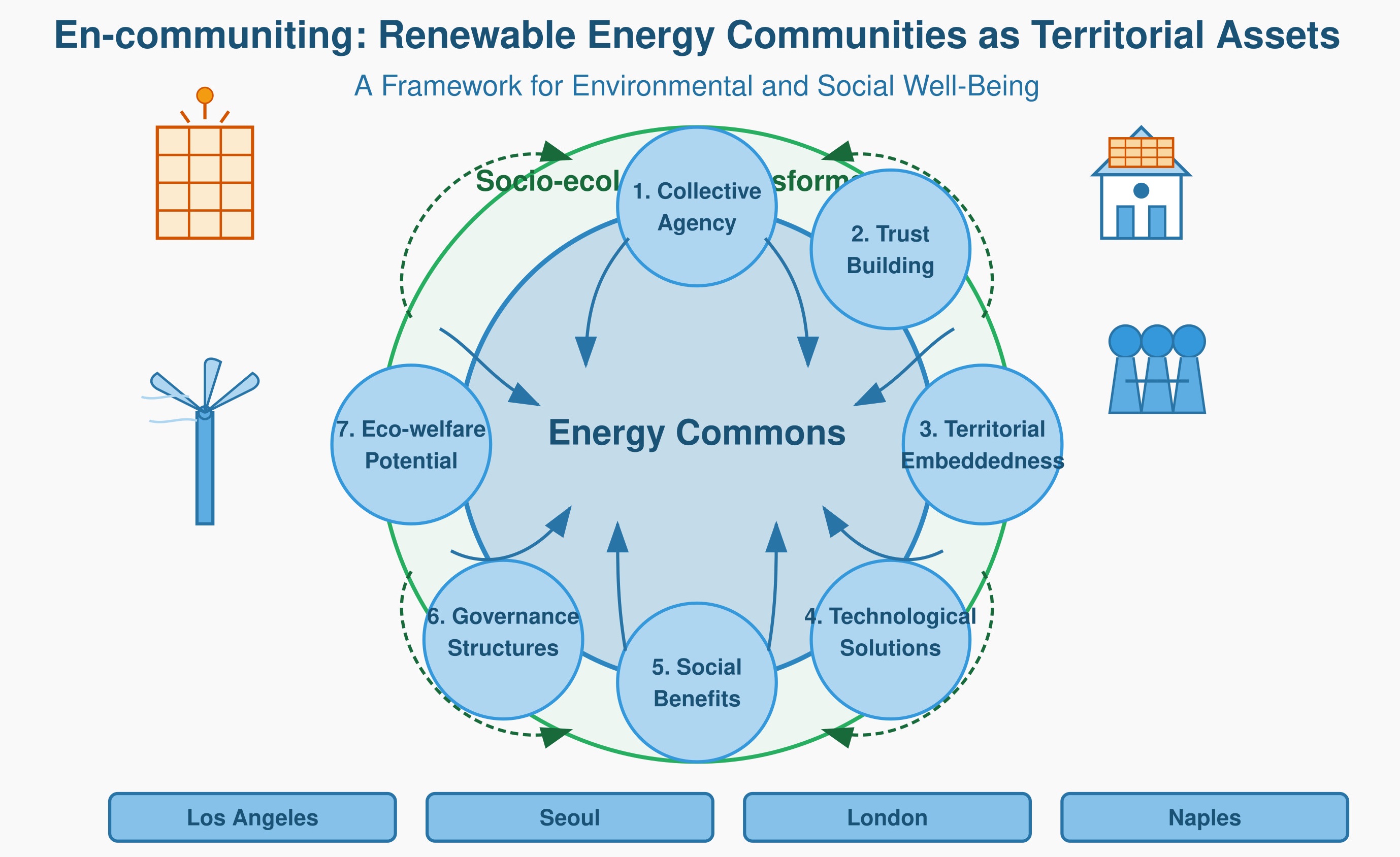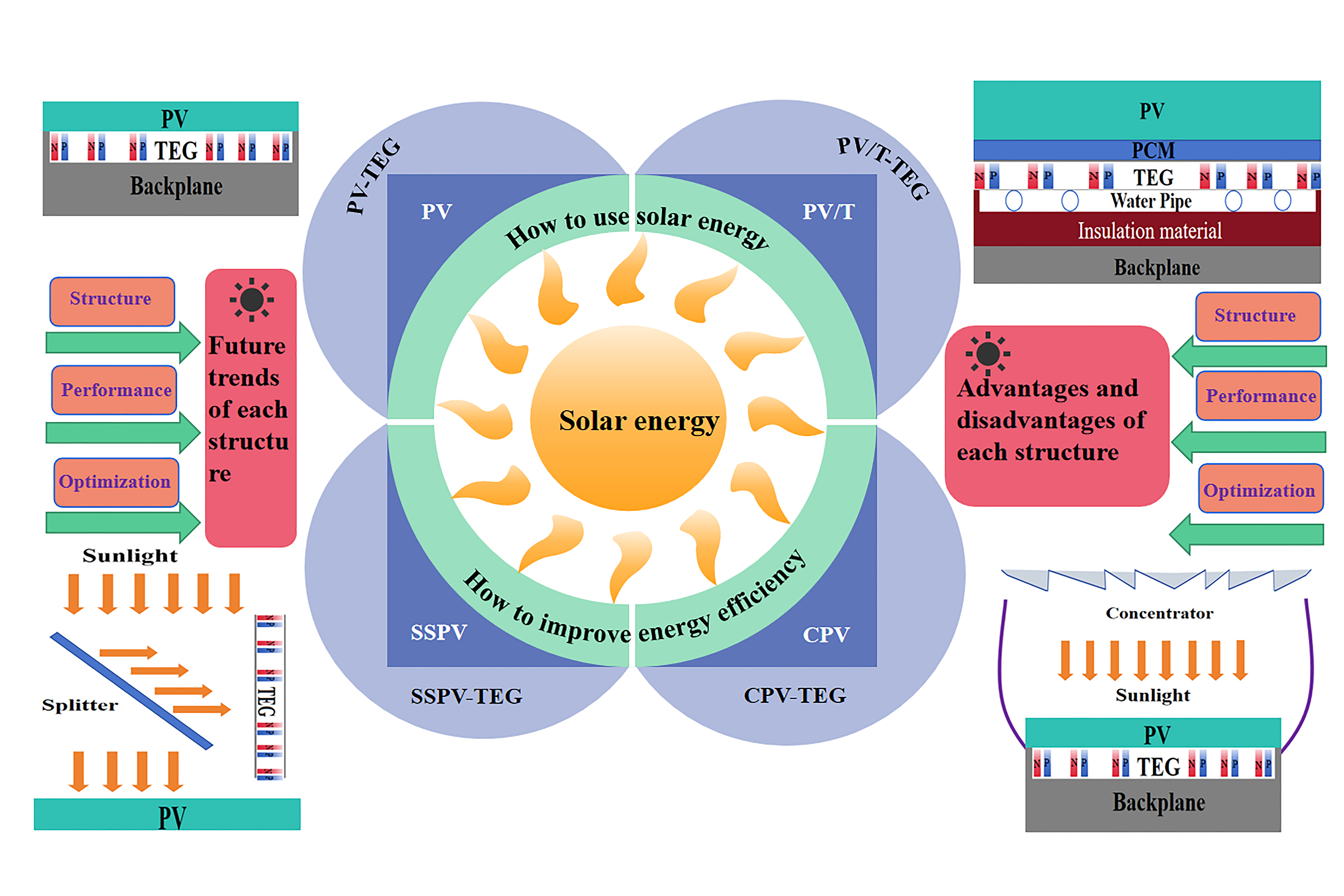
Renewable and Sustainable Energy
ISSN: 2959-0760 (Print)
ISSN: 2959-0779 (Online)
CODEN: RSEEC9
Contact
For any inquiries regarding journal development, the peer review process, copyright matters, or other general questions, please contact the editorial office.
Editorial Office
E-Mail: rse@elspub.com
For production or technical issues, please contact the production team.
Production Team
E-Mail: production@elspub.com
About This Journal
En-communiting: framing renewable energy communities as territorial asset for environmental and social well-being
Received
11 Dec 2024
Accepted
19 Mar 2025
Published
26 Mar 2025
Renewable Energy Communities (RECs) are increasingly recognized as key actors in the energy transition, promoting decentralized governance, social inclusion, and environmental sustainability. The article introduces the concept of en-communiting to describe the dynamic social process through which communities coalesce around shared energy practices, fostering collective agency, trust, and participatory governance. Grounded in the eco-welfare paradigm, en-communiting highlights the role of RECs as territorial assets that integrate renewable energy with social well-being. To systematically assess these dynamics, the article shapes a 7-point analytical framework and applies it in a comparative analysis of four case studies across different socio-economic and geographical contexts. The findings reveal that while RECs hold significant potential for fostering energy democracy and community resilience, their actual impact is shaped by structural barriers, governance models, and community engagement dynamics. The conclusion highlights the discrepancy between the envisioned potential of the en-communiting process and its actual capacity to drive transformative change, emphasizing the need for targeted strategies to bridge this gap and strengthen the role of RECs in fostering a just and inclusive energy transition.
A review of thermoelectric applications in photovoltaic modules: structure, performance, and optimization
Received
18 Nov 2024
Accepted
08 Feb 2025
Published
18 Feb 2025
As the demand for renewable energy continues to grow, photovoltaic modules (PV) have attracted much attention as an important clean energy technology. The combination of thermoelectric generator (TEG) with photovoltaic (PV) systems offers significant benefits, such as using waste heat from PV to produce electricity, reducing the operating temperature of PV to extend its service life, and enhancing the efficiency of overall energy use. This review analyzes four main types of structural combinations: photovoltaic hybrid thermoelectric generation components (PV-TEG), split-spectrum photovoltaic hybrid thermoelectric generation components (SSPV-TEG), concentrating photovoltaic hybrid thermoelectric generation components (CPV-TEG), and photovoltaic/thermal hybrid thermoelectric generation components (PV/T-TEG) in order to obtain the latest relevant research developments. The structural design of the coupled system aims to optimize the integration of the TEG with the PV module for enhancing the heat transfer efficiency and power generation performance. The advantages of the PV/T-TEG system, which combines photovoltaic and thermoelectric conversion technologies, are likely to occupy an important position in the future solar energy market. While progress has been made in the application of TEG in PV, the challenges of efficiency, cost, and thermal management need to be overcome, and the opportunity to take advantage of developments in policy, innovation, and market demand will continue to improve performance through structural optimization.
Foreword of the Special Issue “Advances in Bioenergy and Biomass—Effects on Green Transition”
Received
07 Sep 2024
Accepted
10 Sep 2024
Published
19 Sep 2024
Progress in constructing stable dendrite-free sodium metal anode via artificial electrolyte-electrode interface layer
Received
05 Jul 2024
Accepted
25 Aug 2024
Published
09 Sep 2024
With the advantages of high theoretical specific capacity (1166 mAh·g-1) and low redox potential (–2.71 V), as well as be abundant in resources and low in cost, metallic Na is expected to be used as a promising candidate for the anode material in next-generation high performance secondary batteries. However, factors such as the unstable solid electrolyte interface, unpredictable dendritic growth, and substantial volume change during plating/stripping have hampered the development of sodium metal anodes. A reasonably designed artificial interfacial layer can better stabilize the sodium metal anode, which has been extensively investigated by researchers. This paper reviews the recent advances in the protection of sodium metal anodes by constructing different types of artificial interfacial layers, including inorganic, organic, and hybrid interface layers. Additionally, it discusses the issues and underlying causes associated with sodium metal anodes, and offers an outlook on their future development.
An overview of the recent development and prospects of renewable energy in Italy
Received
12 Jun 2024
Accepted
25 Aug 2024
Published
06 Sep 2024
The study examines recent developments in Italy's renewable energy industry, focusing on advancements, challenges, and prospects. Using secondary data, the research analyzes Italy's progress in renewable energy adoption, particularly in wind, solar, and hydroelectric power, and its alignment with the European Union's climate targets. Italy has made significant strides in increasing its renewable energy capacity, driven by favorable government policies, financial incentives, and technological innovations. The analysis highlights key projects and investments that have contributed to Italy's renewable energy growth, as well as regulatory frameworks that have facilitated this transition. Despite these advancements, the industry faces challenges such as regulatory hurdles, grid integration issues, and public opposition to certain projects. Italy is on track to meet its renewable energy targets, yet further efforts are needed to enhance grid infrastructure, streamline permitting processes, and increase public acceptance. The study suggests that sustained government support and continued innovation are crucial for overcoming existing barriers and ensuring the long-term success of Italy's renewable energy sector. A proactive approach in addressing these challenges will be essential for Italy to fully realize its potential as a leader in renewable energy and contribute significantly to global sustainability goals
Reflections on critical uncertainties in biofutures
Received
03 May 2023
Accepted
04 Jun 2024
Published
28 Aug 2024
This paper reflects upon the concept of Critical Uncertainties, a term drawn from strategic foresight and risk management to identify issues that are highly uncertain and potentially highly impactful on a given strategic context. Given the daunting global challenges we face, the proposed biofutures associated with green transitions could be reimagined to encompass a broader spectrum of uncertainties, including existential risks and unknown unknowns. As global leadership acknowledges global risks, attention should be paid to how to engage these types of issues. This paper observes the participatory process of addressing and contextualising critical uncertainties and suggests that there may be a need for new frames. Planning for what is understood to be uncertain can be contrasted with the need for a new language of uncertainty that we do not yet contemplate. Low uncertainty issues may already be known, seen as sets of alternatives with direct implications, or then higher uncertainty involves even more complex fluid systems, and ultimately there is genuine uncertainty, which we cannot conceive. Within this context of utilising uncertainties, they are reflected upon through two key framings in this paper: imaginaries and future generations, both offering promising avenues for further exploration and inquiry of aspects of uncertainty. This reflexive text aims to reposition critical uncertainties for further study.
Advances in Bioenergy and Biomass-Effects on Green Transition
Special Issue Editor
Advances and Challenges in Hydrogen Energy
Special Issue Editor
Advances in Electrode Materials for Lithium-Ion and Sodium-Ion Batteries
Special Issue Editor




